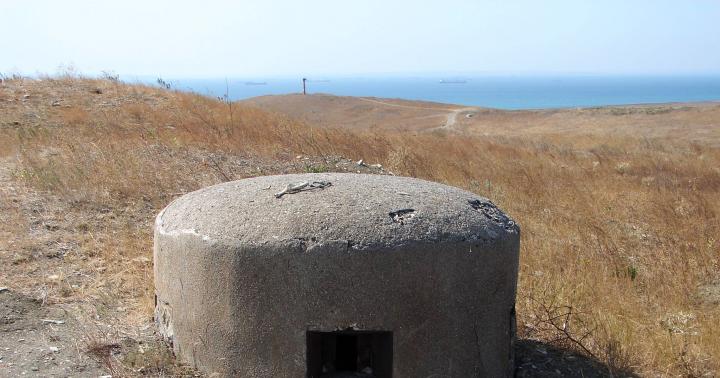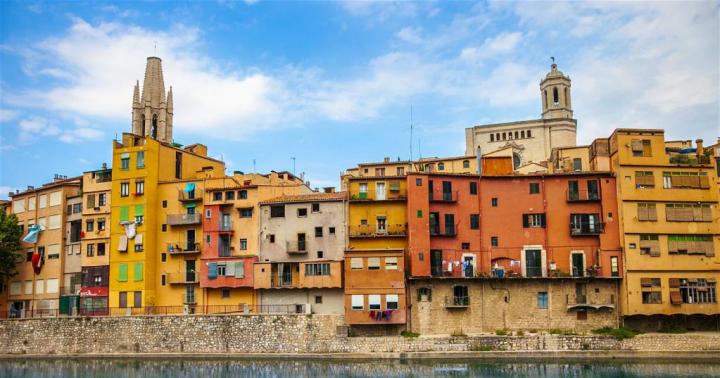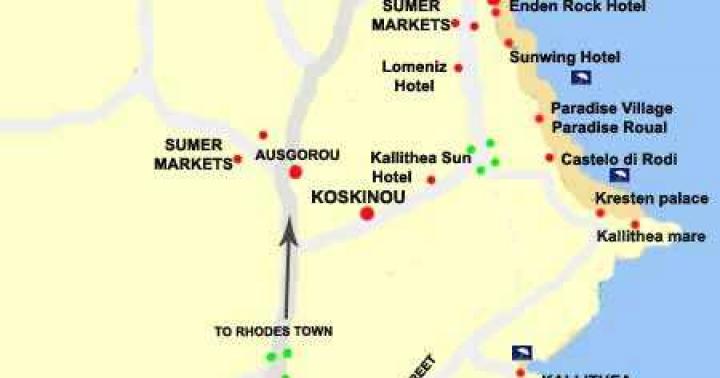Located on our land beautiful lake. It is quiet, with picturesque forest banks. They say that real beauty modest and discreet. This is exactly the beauty of Lake Bolshoy Kultey.
The lake is deep and surrounded by swamps. To get to it - along forest roads. The reservoir is located in a deep basin. The lake creates a unique corner of wildlife conservation. In the surrounding swamps, which are not so easily accessible to humans, many rare plants grow and endangered animals live.
Therefore, today the state of Russia recognizes the lake as a natural monument. This is a paradise for scientists, botanists and zoologists, naturalists who love to study wildlife, animals, insects, plants and birds. And also for fishermen who like to sit here on the bridge and fish from boats.
Personally, I once visited this lake on a trip with my parents. The sunsets are very beautiful here. When the water is calm, the pond resembles a huge magic mirror. It’s good at this time to sail across the lake on a rubber boat, without disturbing the silence with the motor, listening to the uniform splash of the oars. And when there are ripples or waves from the wind, the lake seems to be silver.
The banks of the Big Kultey are overgrown with forest, sedge, reeds and slightly gloomy black alders. The slender tall pines in the forest are very beautiful there, and there are many springs with crystal clean water. Part of the coast is occupied by picturesque sand dunes. And thin and delicate water lilies float on the water... For a photographer, a lover of magnificent views of nature, there is also freedom here.
It is especially important to protect the shores of Lake Bolshoy Kultey from fires. One of the shores of the lake has peaty soils. It is dangerous due to fires from any discarded cigarette, and such a fire is very difficult to extinguish.
Option 2. Natural monument of the Ivanovo region
In the south of Ivanovo region there is a wonderful lake Zaborye, a natural monument. The water in it is clean, sometimes just crystal. The shores of the lake are simply amazing - they go down to the water in terraces. And the lake itself is long and elongated. It is quite small in size, but noticeable. Zaborye is famous for its beauty throughout the Ivanovo region.
Lake Zaborye is surrounded on all sides by pine forests. The air here is as clean, crystal and healing as the waters of the lake itself. It’s especially good here in the summer, on sunny days. And the shores of Zaborye are incredibly beautiful in the fall, when the forests are ablaze autumn colors- from bright yellow and fiery red to royal crimson. In the autumn colors, tall pines and spruces stand out with juicy and fresh green spots.
Several rivers flow into the lake, feeding it. That’s why the Zaborye is full of water and never dries up. The floodplains of rivers where they flow into the lake are usually swampy. There is freedom here for birds and animals, snakes, vipers and frogs. The riches of nature attract hunters here. And to save natural world, some surroundings of Lake Zaborye have been declared by the state a specially protected area. And other shores are very popular for fishermen, who have rich catch here.
The fence is rich in fish. This is why it is well known in the area. Sometimes they say about Zaborye that it is simply teeming with fish.
Along the banks of Zaborye, delicious berries also ripen in abundance in the summer. The lake itself is shallow, but there are places in it that are real abysses. Here the depth exceeds five meters. By the way... At the bottom of the reservoir there are three underground springs - this is a special highlight, the secret of Ivanovo Lake Zaborye.
Option 3. Natural Monument of the Central District
Caves on the Luzha River are a natural monument of the Kaluga region. This is an amazing creation of nature and its masters - water, time and wind.
The caves stretch for many kilometers. They were formed over centuries, because water invariably wore away the soft soils and limestone here. I washed out recesses, underground rooms, passages and tunnels in them. The Luzha River itself, as well as various underground rivers hidden from the eyes of people, worked on the creation of caves. That is why the caves are shrouded in mystery... In science they are now called karst. Now they are mostly hiding under the steep banks of the Puddle, as if under a roof.
These caves are like natural houses built by the elements. The fact that you can live in them and shelter from bad weather has been noticed by people a very long time ago. The ancient Slavs, representatives of the Vyatichi tribes, lived in these caves. And now tourists, vacationers, and nature lovers love to visit here. Athletes love to row along the river in these places.
Both the caves and the surrounding forest are now declared a natural monument and are protected by our state.
Yes, yes, because around the caves there grows a beautiful, although very small in size, forest. Pines and spruces are mixed here with oaks, willows, ash and birch trees, and with many other strong trees. People are also trying to preserve this forest for posterity.
Along the very banks of the Luzha River, there are especially many willows - riverine trees. There are beavers here, they gnaw trees at the very base. And the willows fall right in river waters near the shore. And in the depths of the thickets there are caves. Sometimes they “hide” so well in the vegetation that they scare tourists when they finally see the black cave hole among the greenery...
Option 4. Natural monument of Siberia
The natural monument of Siberia is the Krasnoyarsk Pillars. Today it is a protected area. They are called Stolby Stolby in the old Russian way because there are high rocks in this protected area. Nature itself created them.
You are walking through a green coniferous Siberian forest - and suddenly one of the Stolbov rocks appears in front of you. They are all beautiful and majestic. Tourists love to climb them, and climbers train their skills on the steep walls. Unfortunately, there have also been rock climbing accidents here. A memorial plaque on one of the “pillars” reminds of them.
Smaller boulders are scattered around the large megalithic stones in a picturesque disorder. And around you the magical forest glows with fresh greenery. Tourists often feel as if they are in a magical land of elves or forest spirits. And large stones are the entrance to their houses. And the “pillars” themselves are elven fairy-tale fortresses and their stone palaces...
Paths and paths made of Siberian logs lead through the protected area. These are the wooden roads! And the largest paths are paved. By the end of summer, small fluffy chipmunks come out of the forest en masse! They are not very afraid of people and love to beg them for something to eat. Don't hurt these kids! After all, they are so trusting of people.
You can wander around the Pillars for a very long time, several days. That's what they do sometimes tourist groups that come to Stolby. And a casual traveler who came to Stolby for one day on an excursion must remember that it is easy to get lost in this forest and stone massif. And at night it’s not at all warm to spend the night in the forest without camping equipment.
The section is very easy to use. Just enter the desired word in the field provided, and we will give you a list of its meanings. I would like to note that our site provides data from various sources - encyclopedic, explanatory, word-formation dictionaries. Here you can also see examples of the use of the word you entered.
What does "natural monuments" mean?
Encyclopedic Dictionary, 1998
natural monuments
natural objects that have scientific, historical or cultural, educational and aesthetic significance (waterfalls, geological outcrops, unique trees, etc.) are protected by the state.
Large legal dictionary
natural monuments
according to the definition of the RSFSR Law “On the Protection of the Natural Environment” of December 19, 1991, “individual unique natural objects and natural complexes that have relict, scientific, historical, environmental and educational significance and require special protection of the state.” According to the definition of the Federal Law "On Specially Protected natural areas"dated February 15, 1995, "unique, irreplaceable, ecologically, scientifically, culturally and aesthetically valuable natural complexes, as well as objects of natural and artificial origin." Clauses may be of federal or regional significance. Declaration of natural complexes and objects P.p., and the territories occupied by them - the territories of P.p. are allowed with the seizure of the land plots occupied by them from the owners, possessors and users of these plots.
Natural monuments
individual natural objects that are protected or deserve protection due to their scientific, educational, historical-memorial or cultural-aesthetic significance (for example, a waterfall, a cave, a picturesque cliff, a volcanic or meteorite crater, a unique geological outcrop, a remarkable boulder, rare or interesting in historically tree, etc.). In the USSR, the Kungur Cave, Kapova Cave, Kivach Waterfall, and other natural sites are widely known. For most natural sites, the regime of reserves is established, and for especially valuable natural objects, the regime of reserves is established. Sometimes, individual protected areas of significant size (forests, areas of valleys, coasts, mountain ranges), which are more accurately called protected landscapes or tracts, are classified as protected areas.
Individual unique natural objects and natural complexes that have relict, scientific, historical, environmental and educational significance and require special protection by the state are declared natural monuments.
Law of the RSFSR dated December 19, 1991 N 2060-I, art. 64
Great definition
Incomplete definition ↓
Natural monuments
unique, irreplaceable, ecologically, scientifically, culturally and aesthetically valuable natural complexes, as well as objects of natural and artificial origin. Areas of land and water, as well as single natural objects, can be declared natural monuments, including: areas of picturesque areas; reference areas of untouched nature; areas with a predominance of cultural landscape (ancient parks, alleys, canals, ancient mines, etc.); places of growth and habitat of valuable, relict, small, rare and endangered species of plants and animals, including at the borders of their ranges; forest areas and forest areas that are especially valuable for their characteristics (species composition, productivity, genetic qualities, planting structure, etc.), as well as samples outstanding achievements forestry science and practice; small dendrological parks; natural objects that play an important role in maintaining the hydrological regime; unique forms of relief and associated landscapes (mountains, groups of rocks, gorges, canyons, glacial cirques and trough valleys, moraine-boulder ridges, dunes, barchans, carr fields, groups of caves, giant ice dams, hydrolaccoliths, etc.); geological outcrops of scientific value (reference sections, stratotypes, outcrops of rare minerals, rocks and minerals, known in an extremely limited number); geological and geographical polygons, including classic areas with especially expressive traces of seismic phenomena, as well as detection of faults and folds in the occurrence of rocks; locations of rare or particularly valuable paleontological objects; sections of rivers, lakes, wetland complexes, reservoirs, marine areas, small rivers with floodplains, lakes, reservoirs and ponds; natural hydromineral complexes; thermal springs, deposits of medicinal mud; coastal objects (spits, isthmuses, peninsulas, islands, bays, lagoons, etc.); individual objects of living and inanimate nature (bird nesting sites, long-lived trees and those of historical and memorial significance, plants of bizarre shapes, single specimens of exotics and relics, volcanoes, hills, glaciers, boulders, waterfalls, geysers, springs, river sources, vaucluses, rocks, cliffs, outcrops, manifestations of karst, caves, grottoes, etc.). As of December 31, 2006, there were 28 natural monuments federal significance with a total area of 28.9 thousand hectares and 8942 monuments of regional significance with a total area of 4.15 million hectares.
Natural monuments protected by UNESCO The UN Specialized Agency for Education, Science and the Arts monitors the conservation of monuments cultural heritage all over the world. This category includes both the most outstanding architectural structures created by man and nature reserves- in the second case, UNESCO specialists have to put a lot of effort into protecting unique natural phenomena from plunder and destruction by our freedom-loving race. Especially for you, we have collected 10 of the most beautiful natural monuments, which are among the specially protected.
St Kilda
Scotland This unique, isolated archipelago was inhabited by a small Gaelic population - all evacuated during the Second World War. Now home to a militarized base and several teams of scientists, St Kilda is home to rare species birds and animals.
Wulingyuan Mountains
China Eta mountain system is located in the north of Hunan Province. The mountains owe their appearance to the weathering of sandstones. It was here that Cameron filmed his “Avatar” - one of the peaks was subsequently renamed by the provincial authorities to “Hurray, Avatar!”
Wadden Sea
The North Sea area of the Wadden Sea is called a shallow sea area, of which there are dozens. Natural processes function here without the slightest human intervention; almost the entire territory of this unusual sea covered by three national parks.
Giant's Causeway
Northern Ireland A unique area with more than 40,000 basalt columns. They connected with each other as a result of a volcanic eruption, and the ancient tribes had already come up with a legend that trolls would follow these pillars to Ragnarok.
Rapa Nui National Park
Chile The whole world knows this place thanks to the unique moai statues: Easter Island is considered almost the most mysterious place of our planet. Galapagos Islands
Galapagos Islands Ecuador
It was here that Charles Darwin first thought about the theory of evolution: the abundance of flora and fauna still makes the Galapagos a place of pilgrimage for every self-respecting natural scientist.
Socotra Archipelago
Yemen Four islands and a couple of rocks: one of the world's most isolated archipelagos, located near pirate Somalia, boasts an abundance of endemic fauna and flora found nowhere else in the world.
Yosemite National Park
USA Three thousand square kilometers unique mountain landscapes, granite rocks, waterfalls and redwood trees: Yosemite is rightfully considered one of the best National parks countries.
Tongariro National Park
New Zealand Local mountains are deified by the Maori peoples living here: they connect people and the entire nature of the island.
Ha Long Bay
Vietnam There are more than 3,000 islands in this bay, which is half the number of people living here. Tourists from all over the world arrive every year to experience majestic nature this place.The very concept of “natural monuments” appeared at the beginning of the last century; it was first used by the German scientist A. Humboldt. He applied his concept to natural formations of interest, which, as archaeological finds, should be preserved. Later, this concept began to be used for areas and plant species. This is how the meaning of the term has expanded.
Now “natural monuments” are rare objects created by nature that have value. This is something separate, like rocks or caves, trees, or a whole system - a section of territory like mountain range, groves.
Krasnodar region
It has plenty on its territory. Excursions to the most famous of them are organized every year. This and mud volcanoes, wild gloomy gorges, rocks of the most bizarre shapes, glaciers, many waterfalls, mysterious caves and thickets with relict plants. Interesting and valuable places, objects created by nature look like pearls and are scattered throughout the region as if on the seabed. Many such places have their own legends, which say that centuries ago people who lived here honored them and, creating stories, gave away a piece of their soul. Of course, such relics are worth preserving.
Agur waterfalls
A striking example of a natural monument. Located near Sochi, just 4 km from the Black Sea. Known for their beauty. The waterfalls are formed by Agura, which starts from the slopes of the Alek ridge, then goes to the sea, forming cascades of waterfalls along the way.
Azish Cave
A famous place, groups of tourists are often brought here to explore. The cave is located to the south on the Azish-Tau ridge, high, approximately 1600m. Its length is approximately 690 m, its depth is 37 m, and its total area is up to 1900 sq. m. In the cave you can see stalactites, stalagmites of different sizes, columns. Since 1973, the cave has been a natural monument and is under protection.
Pitsunda pine
A fairly well-known tree that grows everywhere in coastline Black Sea from Anapa all the way to Adler. There are groups of trees and individual representatives. Pine forms large groves in the Dzhankhotsky forest and Sosnovaya.
Guam Gorge
This gorge, in which the Kurdzhips River flows, is located near the villages of Mezmay and Guamka. This is in the Absheronsky district. The gorge is famous for its waterfalls - the river falls from a height of 82 km, and all the kilometers fall unevenly along the riverbed. There are gentle and steep sections, which gives the waterfalls a special flavor.
Long Spit
Another monument created by nature. It can be found at approximately 35 km from Yeisk. The longest spit of the peninsula located on the eastern side Sea of Azov. The total length of the spit is 8 km. Many people call Dolga a pearl.
Rock Sail
Located on the Black Sea coastline, 17 km from Gelendzhik. The sail is located perpendicular to the sea and the nearest shore is 10 km away. The height of the rock is 30 m, length 25. It can be seen that earlier in that place there was a solid limestone formation, a massif, of which only the strongest part remains.



